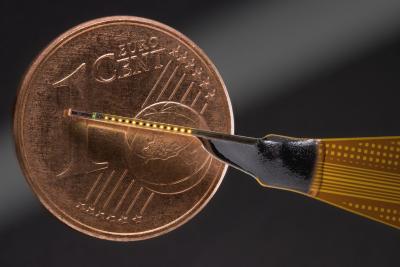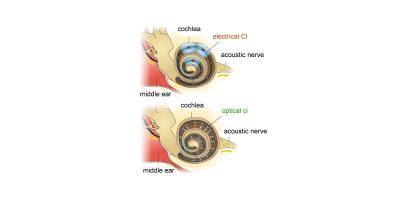Researchers from the Fraunhofer IPMS, together with colleagues from the Max Planck Institute for Multidisciplinary Natural Sciences (MPI-NAT) are developing OLED-based optical stimulators for future cochlear implants.
The researchers explain that optogenetics is a method that uses light to control genetically modified cells in living tissues. By introducing light-sensitive proteins into cells, their activity can be precisely turned on and off with light pulses. This technique is commonly used in neuroscience to study the functions of nerve cells and to activate or inhibit specific neuronal populations.
One of the main requirements in optogenetics is a small and locally-selective light source that can deliver light precisely to stimulate tiny cells. The Fraunhofer has applied its OLED-on-silicon technology (developed for OLED microdisplays) to create tiny, locally controllable light pixels onto a chip. This chip can be flexibly designed to reach the desired locations even in curved structures like the cochlea. This allows light to be used precisely where electrical stimulation alone is insufficient.
The researchers say that future optical cochlear implants, based on such a technology, could deliver better hearing for the severely hearing impaired. Intelligent implantable stimulators based on optical stimulation could also be used for other medical therapies such as laryngeal pacemakers, cardiac pacemakers, pain relieve, retinal implants, or deep brain stimulation."
This development has been achieved as part of the "NeurOpto" project, funded by the Fraunhofer-Max-Planck Cooperation Program 601001.



